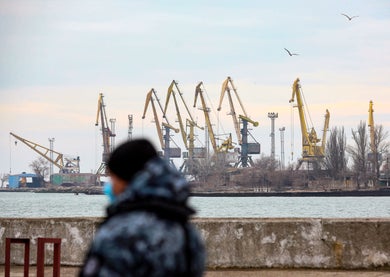Ukrainian ports are once more exporting grain. The cost of fertiliser is rapidly decreasing. Aid worth billions of dollars has been raised.
However, the globe is still experiencing the largest food crisis in modern times as the impact of the epidemic and extreme weather on global agricultural systems is exacerbated by Russia’s involvement in the conflict in Ukraine.
Although market conditions may have improved recently, experts do not anticipate any immediate improvement.
For vulnerable communities already suffering from hunger, this entails further suffering.
Additionally, it increases the risk of starvation and famine in nations like Somalia, which is dealing with what the UN calls a “catastrophic” food situation.
Ukraine typically exports the most sunflower oil and around 45 million metric tonnes of grain to the world market each year. It contributed nearly a fifth of all wheat shipments worldwide in 2019 along with Russia.
The already stressed food system received yet another shock as Russian troops blockaded the nation’s ports, making it even more difficult to bear.
According to Abby Maxman, CEO of Oxfam America, “the Ukraine crisis has had this ongoing negative impact on world food prices and [added] even more volatility.”
“The flow of supplies to regions like East Africa and the Horn of Africa are suffering greatly.”
As a result, the Food Price Index established by the UN’s Food and Agriculture Organisation increased by more than 14% from 2021 to reach its highest yearly level on records going back to 2005.
From 135 million in 2019 to 345 million in 2022, the number of individuals experiencing acute food insecurity (meaning their access to food was so limited that it risked their lives and livelihoods) increased dramatically.
There are some signs that things are getting better. The index has decreased for nine months in a row, and its value in December was lower than it was in the previous year.
The substantial drop in the cost of vegetable oils is a significant contributor. As the economy weakens and worries of a recession spread, supplies are abundant and demand is low.
Farmers have been using less fertiliser to save money, even though historically it has been expensive; this could lower agricultural yields in forthcoming harvests.
The swift removal of China’s coronavirus limitations could cause the demand for agricultural products to surge, pushing up prices once more.
Additionally, according to representatives from the US and Ukraine, Russia is dragging out the inspections of grain-laden ships at Black Sea ports, which causes backlogs and expensive delays.
Slowing down the grain inspections “is not helping to alleviate the food crisis,” according to Fowler.
Following the eight warmest years on record, unpredictable and intense weather also poses a threat. Unprecedented temperatures in Europe, deadly flooding in Pakistan, dry conditions in the US grain belt, and a severe drought in South America over the past 12 months.
















